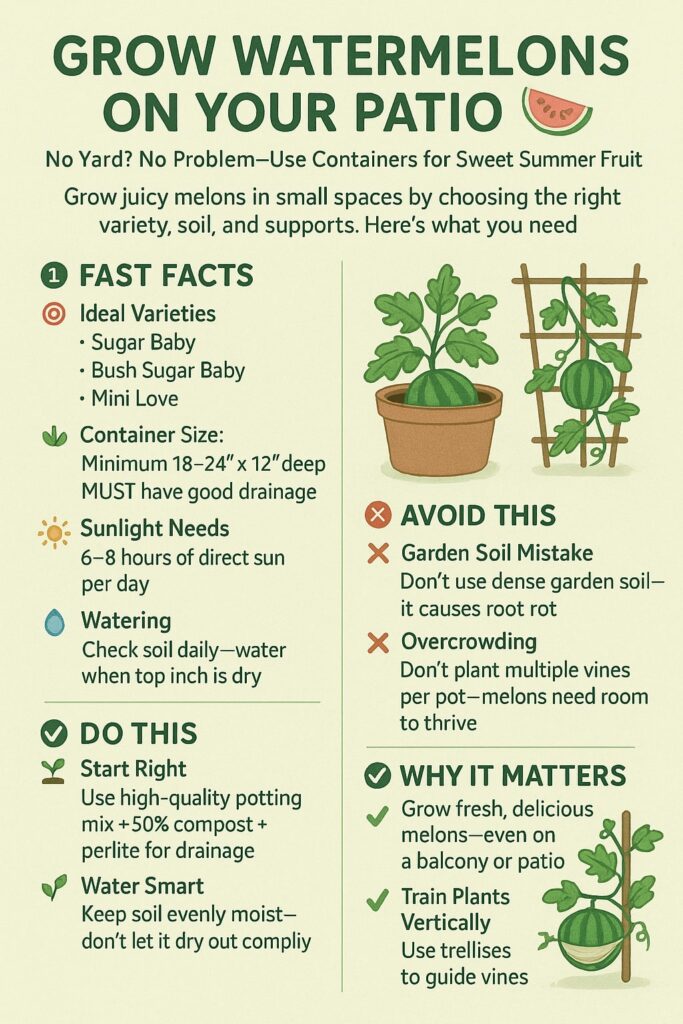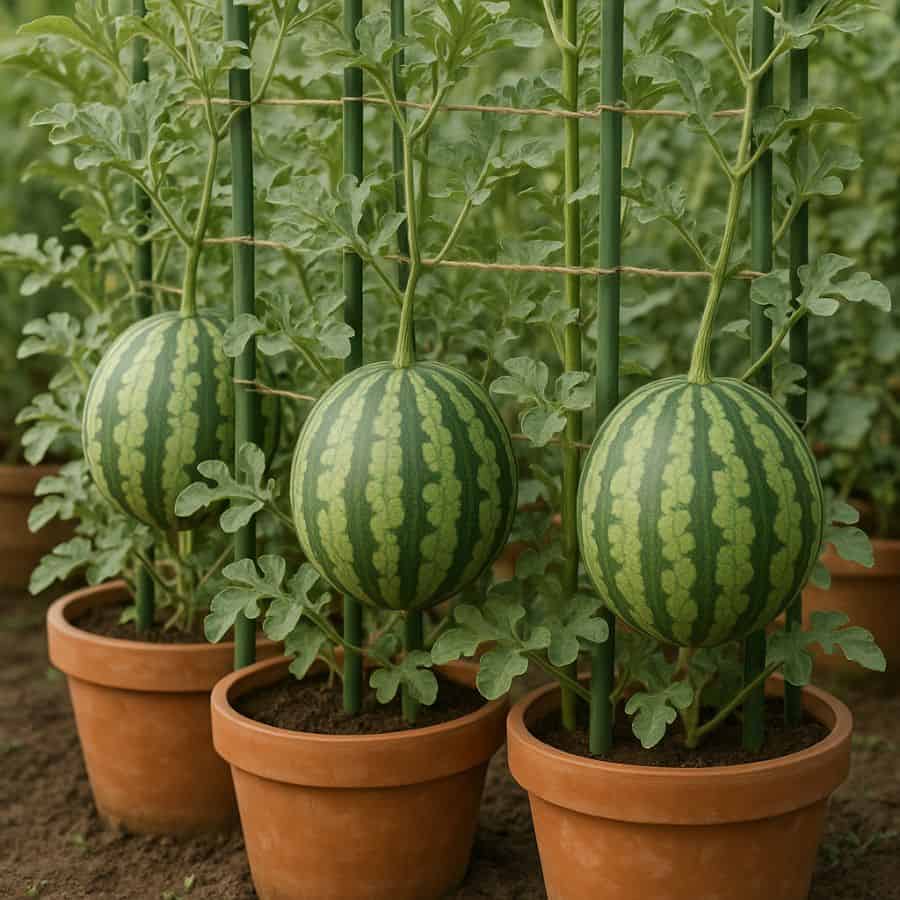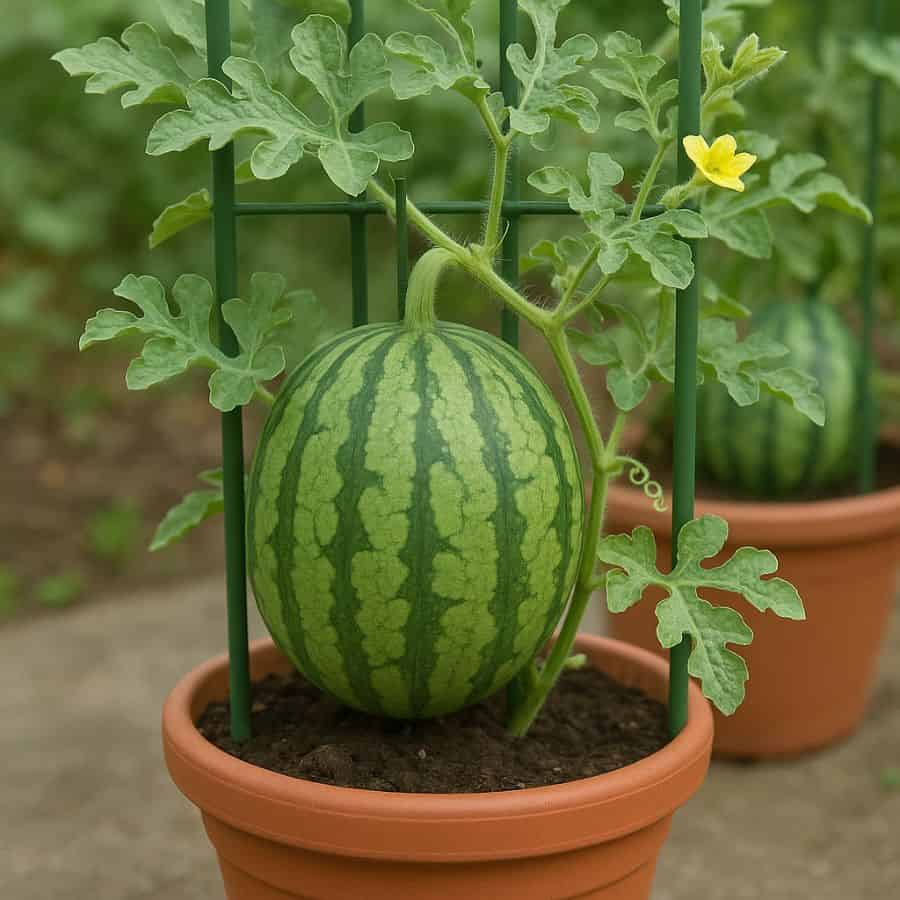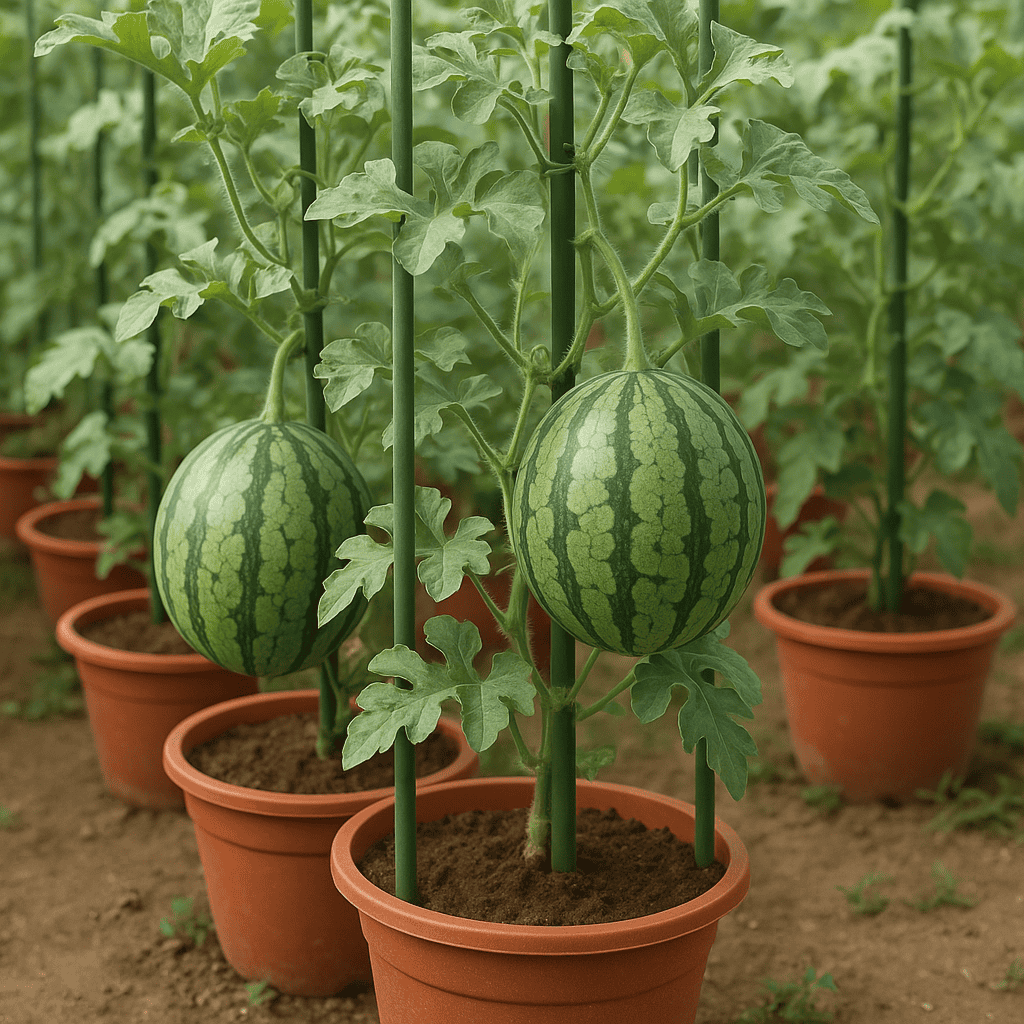
Thought you needed a sprawling garden to grow juicy, sun-ripened watermelons? Think again! I was shocked to discover that these summer favorites can thrive in containers right on your patio or balcony.
Imagine plucking a perfectly sweet watermelon from your own tiny-space garden while your neighbors wonder how you pulled off such magic.
Ready to become the container watermelon wizard on your block? Let’s dive in!
Why Your Balcony Could Be a Watermelon Paradise
Container watermelons aren’t just possible. They’re practically made for urban living. Like studio apartments for your fruits, containers create the perfect controlled environment where you can pamper your plants exactly how they need.
The secret most plant experts won’t tell you is that container-grown watermelons often face fewer pest problems than their ground-dwelling cousins.

No more battling soil-borne diseases or watching helplessly as garden critters feast on your precious melons!
Did you know? Container watermelons can actually mature faster than garden varieties, meaning you’ll be enjoying that first juicy bite while conventional gardeners are still waiting!
Size Matters: Choosing Watermelon Varieties That Won’t Take Over
Not all watermelons are created equal, and trying to grow a 30-pound monster in a pot is like keeping a Great Dane in a studio apartment; technically possible, but not ideal for anyone involved.
Look for these compact superstars bred specifically for small spaces:
- Sugar Baby: The classic container choice, producing 8-10 pound fruits on manageable vines
- Bush Sugar Baby: Even more compact with the same sweet flavor
- Golden Midget: Unique yellow rinds signal when they’re ripe (no guesswork!)
- Mini Love: Produces multiple 7-pound fruits on space-saving vines
The game-changer for your container watermelons isn’t what you think. It’s not fancy fertilizers but simply choosing these specialized varieties that are genetically programmed to thrive in confined spaces.
The Container Controversy: Go Big or Go Home
Your container choice can make or break your watermelon dreams. These aren’t dainty herbs we’re talking about. Watermelons are the heavyweight champions of the garden world!
For successful growth, your container should be:
- At least 18-24 inches in diameter (bigger is better!)
- Deep enough for substantial root development (minimum 12 inches)
- Equipped with excellent drainage holes (watermelons hate wet feet)
- Sturdy enough to support growing vines and developing fruit

Pro tip: Consider fabric grow bags. They’re like the breathable athletic wear of the container world, allowing roots to “air prune” rather than becoming bound up.
The Soil Mix That Makes Magic Happen
Forget what you’ve heard about using regular garden soil in containers. Your watermelon deserves better! Think of your soil mix as the five-star hotel where your watermelon roots will live.
Create a vibrant, growing environment with:
- High-quality potting mix as your base (never dense garden soil)
- 30% compost for slow-release nutrients and moisture retention
- A handful of perlite or coarse sand for drainage
- A soil pH between 6.0-6.8 (slightly acidic to neutral)
Mix in a slow-release organic fertilizer before planting. Think of it as stocking the refrigerator before your watermelon moves in!
Plant Like a Pro: From Seed to Seedling
Now for the moment of truth: getting those seeds or seedlings into their new home! Your watermelon’s entire future depends on this critical step.
Follow this foolproof planting process:
- Fill your container, leaving 1 inch of space at the top
- Plant seeds 1 inch deep and 2-3 inches apart
- Water thoroughly until moisture runs from the drainage holes
- Place in your sunniest spot (these are sun worshippers!)
- Keep soil consistently moist until germination (typically 7-10 days)
- Once seedlings have a few true leaves, thin to the strongest plant
Most people make this mistake with their watermelons: planting too many seeds and refusing to thin them. Your container can only support one plant. Be ruthless and choose the strongest seedling!
Thirst Trap: The Watering Secret for Juicy Fruits
Your watermelon is 92% water. The clue is in the name! Consistent moisture is the difference between amateur and pro plant parents when growing container watermelons.
Your watermelon is trying to tell you something important about its watering needs:
- Containers dry out faster than garden beds. Check moisture daily
- Water deeply when the top inch of soil feels dry
- Increase watering during flowering and fruit development
- Always water the soil, never the foliage (fungal diseases love wet leaves)
- Consider a drip irrigation system for consistent moisture
The most spectacular watermelons develop when water levels remain steady; think marathon, not sprint!
Sunshine & Support: Helping Your Vines Thrive
Watermelons are sun-hungry plants that need a minimum of 6-8 hours of direct sunlight daily. Even in containers, those vines will try to take over like teenagers sprawling across a couch.

Transform your growing space with these support strategies:
- Install a sturdy trellis behind the container (at least 6 feet tall)
- Gently train vines to climb as they grow
- Use soft plant ties or strips of old t-shirts to secure vines
- Create hammocks from old pantyhose to support developing fruits
A vertical growing system can turn a sprawling 20-square-foot mess into a tidy vertical garden that actually saves space!
The Waiting Game: How to Know When Your Watermelon is Ready
The hardest part of growing watermelons? Resisting the urge to harvest too early! Patience separates the watermelon masters from the eager rookies.
Look for these unmistakable signs of ripeness:
- The curly tendril nearest the fruit stem turns brown and dries up
- The spot where the melon rests on the soil turns from white to creamy yellow
- The melon’s skin loses its glossy shine and becomes more matte
- When tapped, the melon produces a deep, hollow sound (not a high-pitched tone)
Did you know? The average watermelon takes 70-90 days from planting to harvest, about the same time it takes to binge-watch five seasons of your favorite show!
Troubleshooting: Rescue Your Struggling Watermelon
Even with perfect care, container watermelons sometimes face challenges. Don’t panic! Most issues have simple solutions.
Quick fixes for common problems:
- Flowers but no fruit: Hand-pollinate by transferring pollen from male flowers (thin stems) to female flowers (with a tiny watermelon bump at the base)
- Yellow leaves: Usually indicate nutrient deficiency. Apply balanced liquid fertilizer
- Cracked fruits: Caused by inconsistent watering. Maintain steady moisture
- Powdery white spots on leaves: Fungal infection, improve air circulation, and apply organic fungicide
Remember, even experienced gardeners face challenges. The plant world isn’t about perfection. It’s about adaptation!
The Sweet Reward: Enjoying Your Homegrown Treasure
Few gardening moments match the thrill of slicing into a watermelon you’ve grown yourself. That first crisp crack as your knife breaks the rind, revealing vibrant flesh that puts grocery store melons to shame!

Your container-grown watermelon isn’t just food, it’s a triumph over limited space and proof that determined gardeners can grow anything, anywhere. Share your juicy success with friends (or keep it all to yourself. We won’t judge!).
Ready to transform your patio into a watermelon paradise? With these container secrets, you’re set to grow the sweetest, juiciest melons your neighborhood has ever tasted—no yard required!